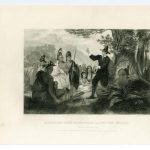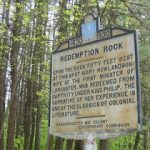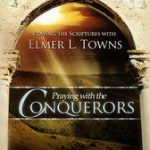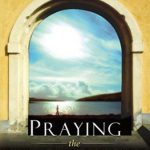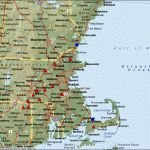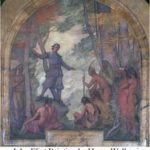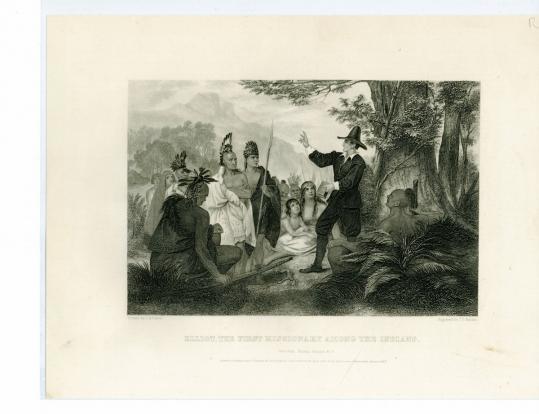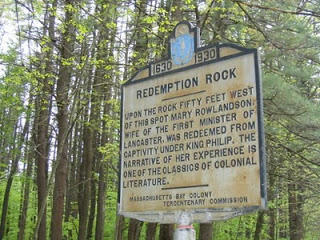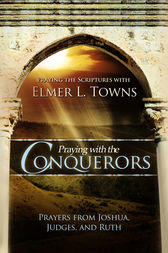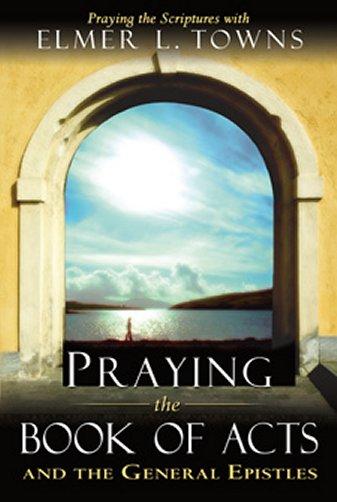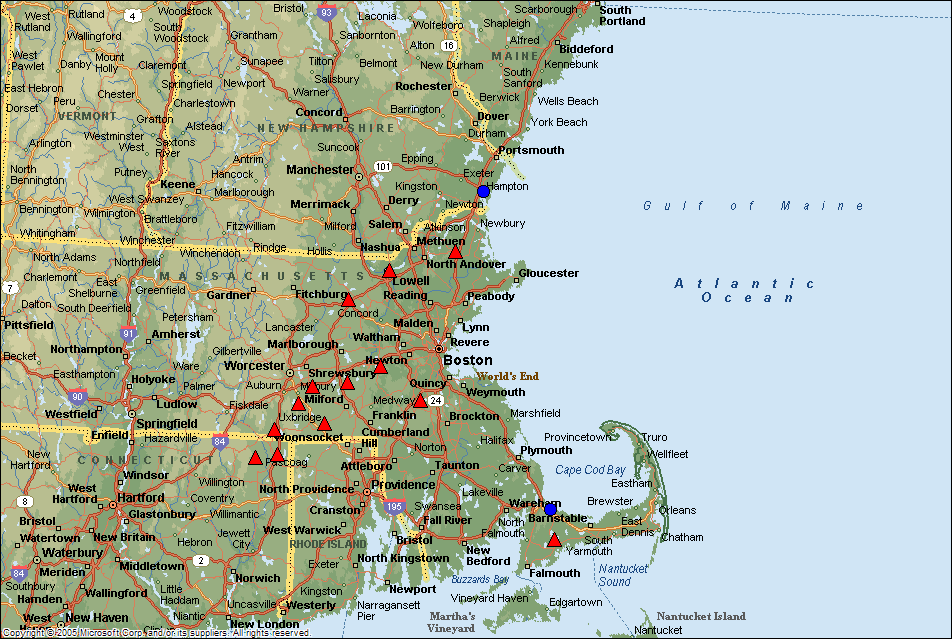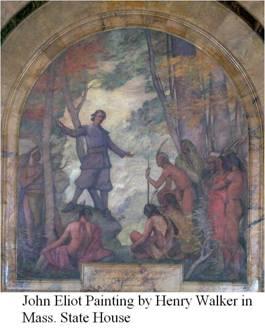The term praying towns generally refers to Christian Native American villages set up by the Massachusetts Bay Colony between 1651 and 1674,
although similar settlements were also created in the seventeenth century by the French in Canada and by native converts on Martha’s Vineyard and in
New Plymouth during the same period. Since Europeans believed in a close connection between church and state, those efforts brought colonial political
influence along with the Gospel. In addition, missionaries believed that natives needed to be civilized as well as Christianized and created the mission
towns for that purpose.
Puritan leaders in Massachusetts believed that mission communities would allow them to isolate and control potential converts in order to completely
change native ways. Their envoy, Reverend John Eliot, learned Algonquian from a Pequot War captive. He was spurned in his first effort, preaching to the
Massachusett sachem, but, in 1647, he gained the support of Waban, head of Nonantum (modern Newton). The Puritan minister drew a curious and
anxious crowd that grew at each of his five visits, and he convinced many to embrace civilized life and Protestantism. The native converts wore English
clothes, cut their hair, and forswore many old customs.
In 1651, Waban and Eliot founded the first Praying Town, Natick, along the edge of Nipmuck territory. Natives who went to live there gained material
assistance, education, and deeper connections to the colonists and their powerful god. Residents were required to follow a legal code designed to force
them into English social and political patterns, including gender roles and monogamy. At the same time, pre-mission community leaders (like Waban)
became leaders in the praying towns, and they enforced a traditional regard for community peace and stability, although Eliot and English magistrates
supervised the native courts and reviewed all major decisions.
Not all Europeans demanded that native converts embrace wholesale change. The French Jesuits preferred to work with village leaders, and (after initial
failures) the few mission towns that they set up were largely governed by native chiefs and did not require their members to give up all of their customs.
Among the English, the Mayhews, who owned Martha’s Vineyard, asked Christian Native Americans to remain loyal and pay tribute to their leaders. In
New Plymouth, Richard Bourne and John Cotton followed the pattern set by Mayhew, permitting converts to maintain many traditions not tolerated by
Eliot’s followers. They gained enough support to create a Christian American Indian village at Mashpee and small churches scattered around Cape Cod
and the villages west of Plymouth.
The praying towns helped spark King Philip’s War. By 1674, Eliot had created a network of seven praying towns, and, that year, he brought Native
American Christian leaders to seven Nipmuck towns farther west, alarming many native sachems. John Sassamon, one of Eliot’s most prominent converts,
became secretary to Metacom (King Philip) but earned his enmity when he warned the English that the Wampanoag sachem planned war. In February
1675, Sassamon’s body was found under pond ice; those accused of his murder were three of Metacom’s advisers, and their trial was clearly aimed at
the sachem.
A few months later, the terrible war erupted. The praying Indians rejected Metacom and asked to join colonial forces, but they were deeply suspected of
treachery and were confined to Deer Island in Boston Bay in the fall. Native Americans on Cape Cod and the Vineyard, on the other hand, managed to
remain in their villages and out of the conflict. When Massachusetts finally approved native enlistment, the praying Indians contributed critical scouting
skills. As the war ended, they were released from Deer Island.
Most of the few Native Americans who remained in Massachusetts soon resettled Natick and three other praying towns. These groups (ironically)
increased their autonomy, particularly after Eliot died in 1690, and provincial laws barred the sale of their lands without permission of the assembly. A
decade later, when Massachusetts annexed New Plymouth, the Native American residents of the praying towns there obtained similar protections. But
throughout the eighteenth century, these remaining communities were battered by changes in the colonial economy; by the terrible effects of epidemics,
alcoholism, and indebtedness; and by the loss of men in wars or to migratory labor.
The survivors adapted by teetering along the line between isolation from colonial society and culture and immersion in it, seeking to satisfy their needs in
the new environment while maintaining critical boundaries against white settlers. By the time of the American Revolution, only a handful of such towns
remained, led by native ministers, who preached in the Wampanoag language and were largely acculturated to English ways.
Daniel R. Mandell
See also: Christ and Christianity; King Philip’s War; Missions; Native American-European Relations; Native Americans;
Religion (Chronology); Religion (Essay); Religions, Native American.
Bibliography
Axtell, James. The Invasion Within: The Contest of Cultures in Colonial North America. New York: Oxford University Press, 1985.
Gookin, Daniel. “Historical Collections of the Indians of New England.” Collections of the Massachusetts Historical Society, 1:1 (1792): 141226.
Mandell, Daniel R. Behind the Frontier: Indian Communities in Eighteenth-Century Eastern Massachusetts. Lincoln: University of Nebraska Press, 1996.
Praying Towns Photo Gallery
Maybe You Like Them Too
- Top 10 Islands You Can Buy
- Top 10 Underrated Asian Cities 2023
- Top 10 Reasons Upsizing Will Be a Huge Travel Trend
- Top 10 Scuba Diving Destinations
- The Best Cities To Visit in The World

